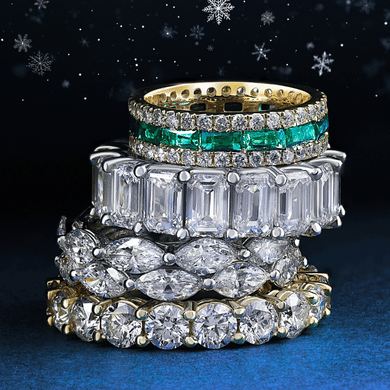How Are Synthetic Diamonds Formed?
Jun 22, 2025
People love to wear synthetic or lab diamond-based jewelry. The affordability, sparkle, and elements of synthetic diamonds, like traditional diamonds, make them a worthy alternative solution. However, when users want to buy these diamonds, they have different types of queries. Are lab diamonds real? How are synthetic diamonds formed? Etc. Also, read about the gold in necklace.
How Are Synthetic Diamonds Formed? Methods, Quality, And Grading Requirements
The following are the details to learn: How are synthetic diamonds formed?
Understanding Synthetic Diamonds
These diamonds are formed with advanced technological tactics and conditions. They replicate the conditions from which natural diamonds are formed. Synthetic diamonds contain the same crystal structure as traditional diamonds. They also have the same
- Brilliance.
- Hardness.
- Durability.
They are usable in the diamond jewelry industry and industrial applications. Also, get details about the circle chain.
Two Specific Formation Methods
Two types of methods are used for the formation of synthetic diamonds:
High Pressure High Temperature Method
It’s the primary formation method for lab diamonds that’s still in use.
Process Overview
The HPHT process mimics the natural conditions of high temperature and pressure deep inside the Earth.
Conditions
Carbon is placed in a specially designed press and exposed to severe temperatures.
Catalyst
A metal catalyst is used to dissolve carbon and help it crystallize on a small diamond seed. It’s mostly a combination of:
- Iron.
- Nickel.
- Cobalt.
Crystal Growth
Over several days to weeks, carbon atoms bond to the diamond seed, growing into a larger diamond crystal.
Result
HPHT diamonds often have a slightly yellowish tint due to the metal catalysts. Although colorless and other colored diamonds can also be produced.
Chemical Vapor Deposition (CVD)
This is a modern and famous technique in lab diamonds. It can help produce diamonds with fewer inclusions.
Process Overview
In CVD, diamonds are grown from a hydrocarbon gas mixture in a vacuum chamber.
Conditions
In a chamber full of gases, a small diamond seed is placed.
Activation
These gases are heated at high temperatures. That led them to break apart and release carbon atoms.
Crystal Formation
The carbon atoms remain on the seed, which gradually builds up layer by layer. It helps in forming a diamond crystal.
Result
CVD lab diamonds are normally colorless or near-colorless. They undergo post-treatments to improve their clarity and color levels.
Quality And Grading Requirements
The 4Cs are used in the grading of synthetic diamonds like natural ones. GIA and IGI are special gemological institutions that provide certifications for lab diamonds. Differentiating between natural and lab diamonds is quite difficult without professional testing equipment.
Conclusion
To conclude, how are synthetic diamonds formed? There are specific formation methods in synthetic diamonds. These methods help create shiny and original diamonds according to eco-friendly requirements. That’s why people prefer these diamonds. Many people like to wear a cross necklace.
Next, read: Tennis bracelet.
 -
-  -
- 
 Engagement Rings
Engagement Rings
 Tungsten
Tungsten Wedding Rings
Wedding Rings
 Fine Jewelry
Fine Jewelry
 Diamond Studs
Diamond Studs
 Up To 80% Off
Up To 80% Off
 Find The Perfect Gift
Find The Perfect Gift
 White Gold
White Gold